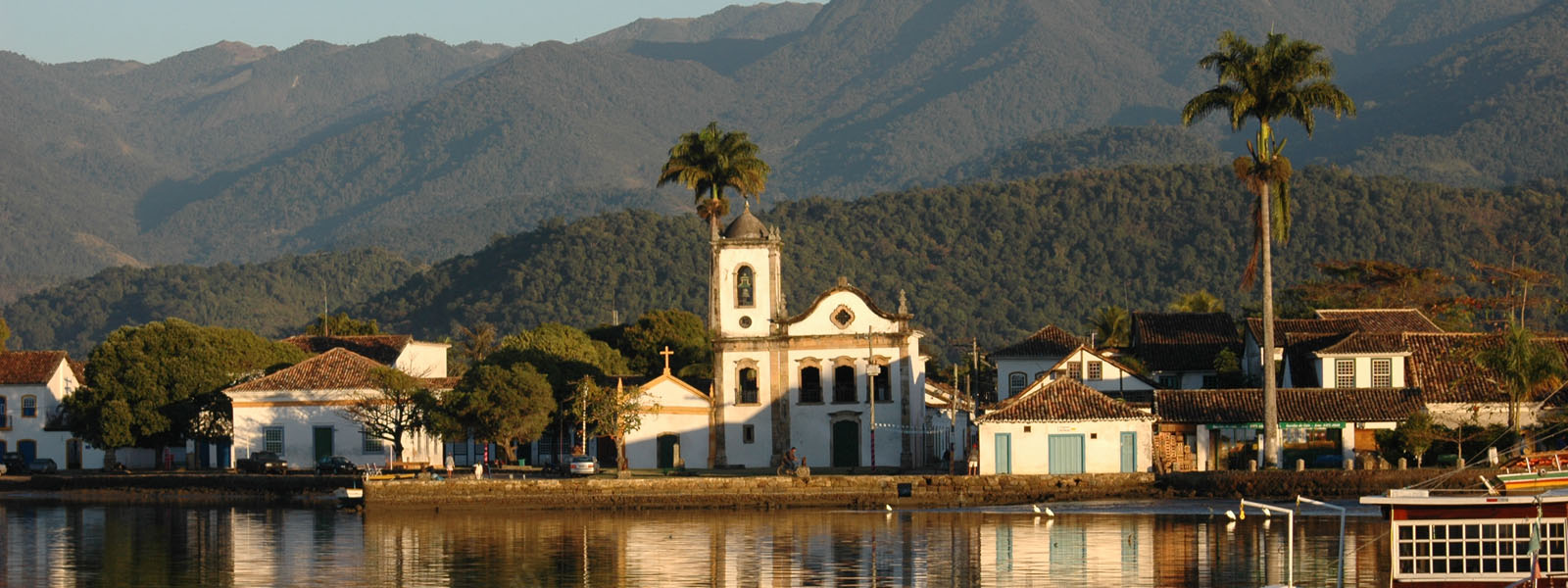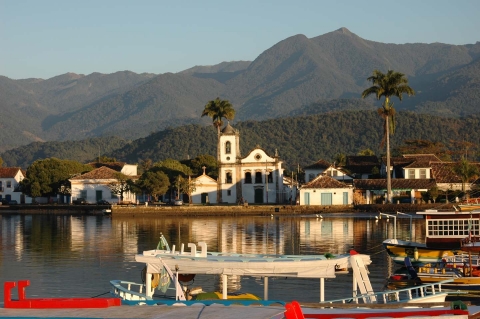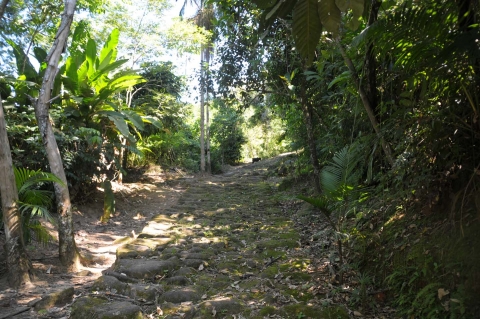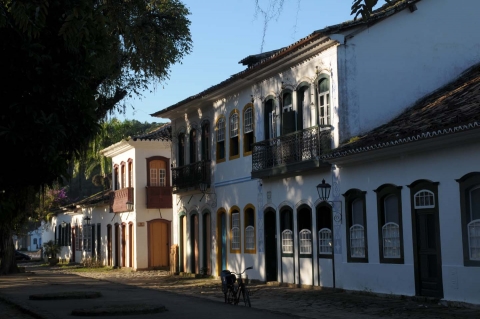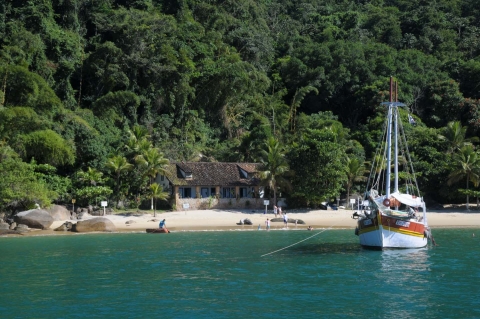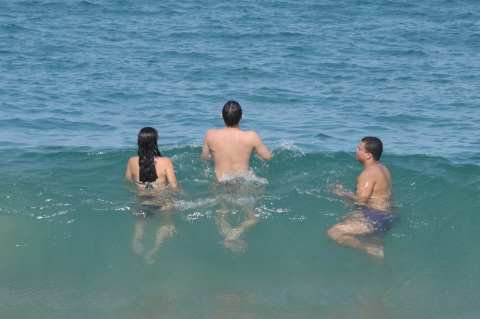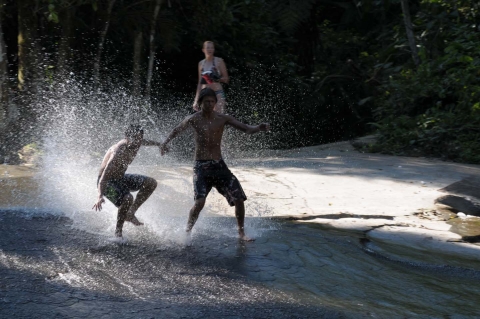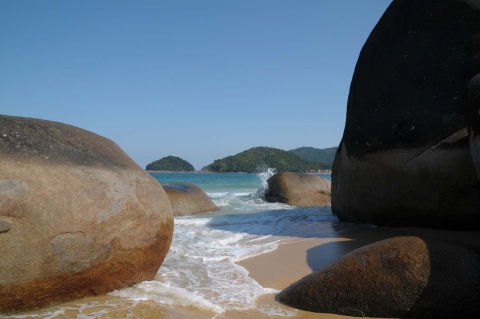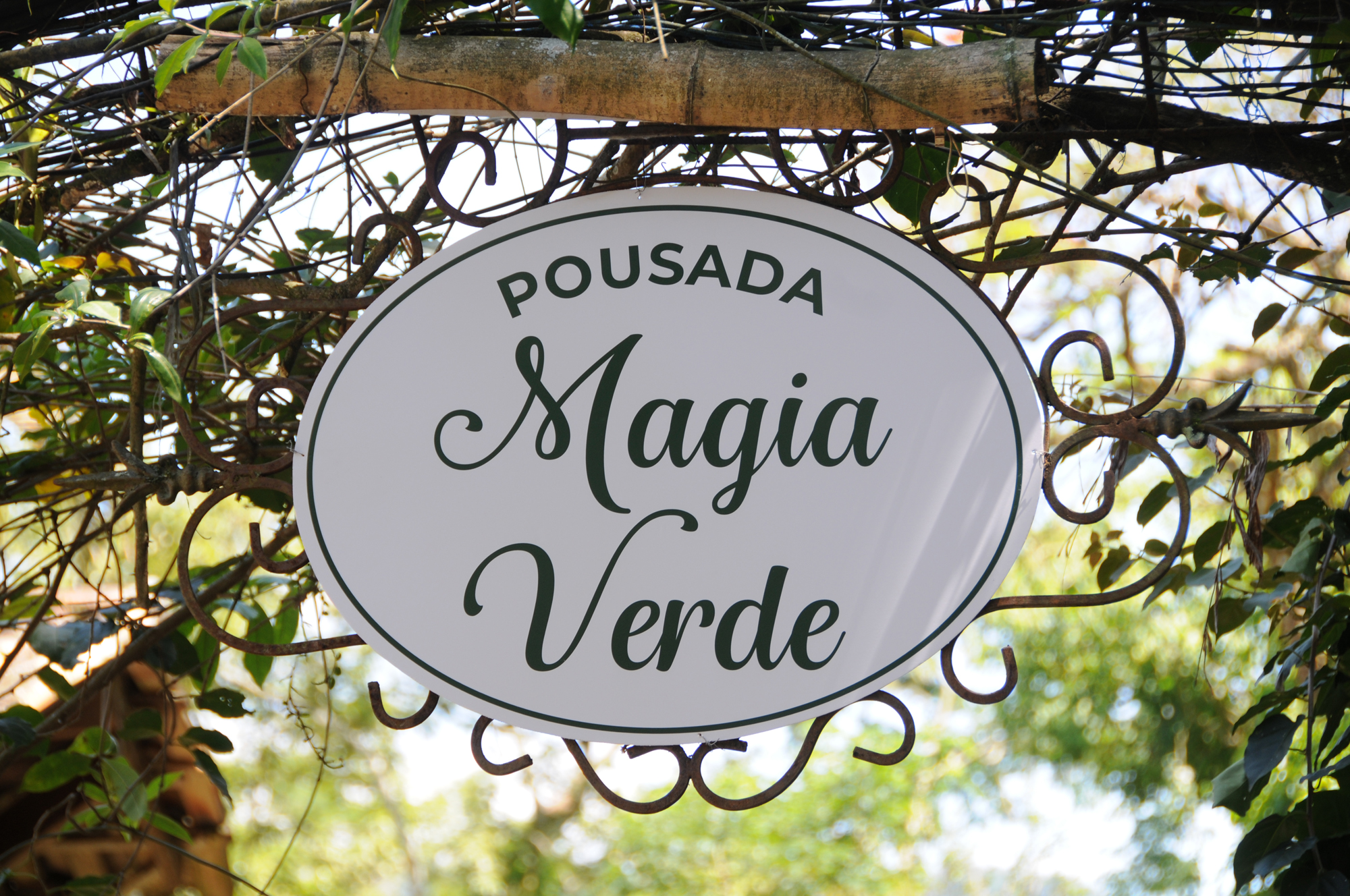Paraty is as Angra dos Reis a historic city, too. The date of the first settlements is not known, but it must have been around 1550, it was the end point of a trail from São Paulo following the Paraíba Valley in the highland. From here the journey to Rio de Janeiro was continued by ship.
The complete historic center exists, small white houses of the 17th century with painted door and window frames with streets built by slaves. It is UNESCO world heritage. In Paraty also every year an internacional festival of literature takes place.
When gold and diamonds were found in the inner of Brazil (state of Minas Gerais) in the 17th century a trail of stones was built, the caminho de ouro. It was necessary for the transport of gold and diamonds to the coast, but also to get slaves and food into the inner of Brazil. Length: more than 1400 kms. It also is world heritage and close to Paraty a part is freed of the jungle, so you can make a walk on the caminho do ouro.
1728 the direct trail from Minas Gerais to Rio de Janeiro was completed and Paraty lost its importance. Only a few small periods Paraty became important again, when Rio grew fast and needed food from outside. The region is well known for its suger cane and of course for a product made of the cane, the alcoholic drink cachaça, which is used for the famous caipirinha. Finally, the farmers from the Paraíba Valley used Paraty to export the coffee via Paraty and buy slaves for the farms. When the railway Rio – São Paulo was finished in the mid of the 19th century, Paraty finally was forgotten, until the 50s of the 20th century.
When you visit the center today, you feel back in the 18th century, and although you meet many tourists, you notice this special athmosphere. Small shops, restaurants and bars as well as many artists make this place special. Sit inside a backyard of a restaurant, listening to brazilian music, or in front on the street, watching the people pass, talking, having fun. You will never forget.
You can make lovely tours by schooners during the day, visiting nice beaches along the coast or on an island … green water is waiting for you to swim between fish, get sun tanned. Meals and drinks are served on the schooners. To get to the place where the schooners leave in the late morning, you pass the historic center.
There is also a beach close to the city, but the better ones you find a few kms outside, the most beautiful is Trindade.
Also near Paraty there is the possibility to visit quilombos, villages founded by slaves that flew and founded their own villages hidden in the rainforest.
Finally, beside the trail, tours by schooner, visiting beaches and quilombos, you can make tours by bicycle (for rent) or make a trilha to waterfalls. The Cachoeira Tobogã is very close to the caminho de ouro, where there is a natural slide. And if you wish, you can make a tour by canoe and foot, sleeping one night in a hut in the rain forest.
There are many places to discover far above the ones, where tourist guides take you:
- hidden beaches with rests of historic constructions,
- another connection to the gold trail (caminho de ouro),
- hidden waterfalls, such as one with stairs made by slaves leading to it
- the house where the mother of the famous German wirites Thomas ans Heinrich Mann grew up, with a view to Paraty, directly at a beach and with a waterfall at its side
- and more.
Paraty, feel centuries back!
Gallery
Our tip, where to stay in Paraty
